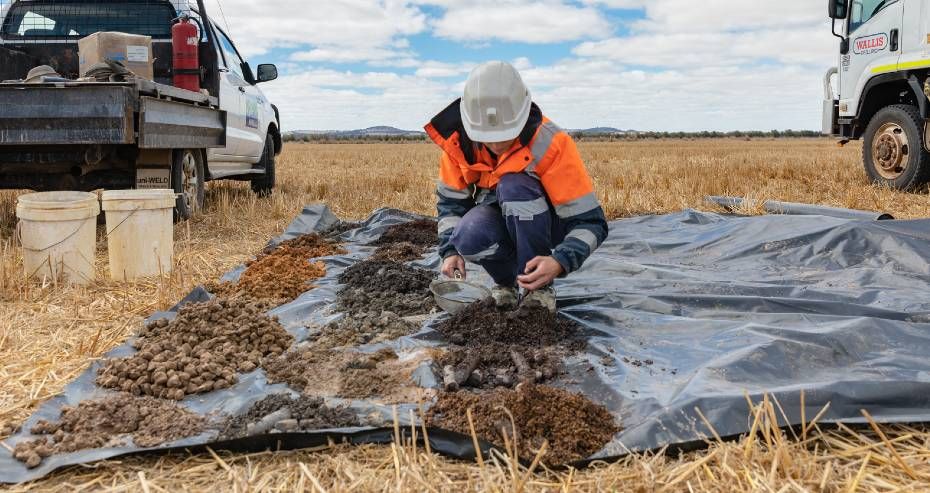Understanding minerals exploration

Exploration is a range of activities to help determine if there are minerals under the ground. If the exploration process identifies minerals can be commercially extracted, then mining in the future may be possible.
Less than one per cent of exploration projects typically progress to establishing a mine. This is part of the reason why mining and the resources extracted come at a high financial cost.
Initial exploration activities, such as mapping, will start over a large area and then target smaller and smaller areas. The aim is to see if mineralisation is at levels large enough to be commercially extracted.
Exploration for minerals may involve:
- mapping
- surveying the ground from the surface or air
- testing water and soil samples
- drilling.
Exploration is strictly governed. Minerals explorers need to apply for an exploration licence. The licence gives the explorer sole rights to search for a specific mineral within the specified area.
An exploration licence does not permit mining or guarantee that a mining licence will be granted. The licence holder may also apply for a mining or retention licence.
Value and benefits
Nearly everything we use each day began life as a mineral. Your car, PC, mobile phone and power supply are all made with materials derived from minerals.
Exploration is an important step in finding minerals so they can be potentially mined. Our demand for minerals is increasing, for example, we need more copper to build renewable energy assets such as wind turbines. This demand is helping drive an increase in exploration across the state.
Victoria's minerals exploration industry has been part of our economy for nearly 200 years. It continues to boost local towns through expenditure at supply stores, motels, servos and many more businesses.
Did you know?
Exploration companies have a duty to:
- consult with the landholder or resident
- manage environmental impacts
- protect cultural heritage
- consider public safety and land use concerns
- enter into agreements with Traditional Owners (where licences include Crown land)
- negotiate access and/or have compensation agreements in place with landholders
- share information on any activities authorised under the licence
- provide the community with a reasonable opportunity to express views about those activities.
The licensee (licence holder) needs to take all reasonable measures to:
- minimise the impacts of drilling operations
- protect the environment, human health and services.
Exploration rules
We are responsible for ensuring exploration occurs legally. We regulate the industry and support communities where exploration or mining is taking place.
If minerals exploration happens in your community, you need to know your rights and responsibilities. We're here to help.
In Victoria, minerals exploration is managed under the Mineral Resources (Sustainable Development) Act 1990 (MRSDA) and the Mineral Resources (Sustainable Development) (Mineral Industries) Regulation 2019.
Minerals exploration and mining are not allowed in national or state parks. More than 20 laws apply to exploration and mining to protect the environment, land, biodiversity, water, and water catchments.
Aboriginal cultural heritage
The resources sector must be committed to genuinely partnering and meaningfully engaging with Victoria’s Traditional Owners and Aboriginal communities to support the protection of Country.
A key consideration for minerals exploration and mining operators must be recognising, respecting and protecting aboriginal cultural heritage.
Minerals activities on public land may be subject to Native Title considerations.
Read more on our Earth resource industries and Traditional Owners page.
Fact sheets
Page last updated: 21 Aug 2025